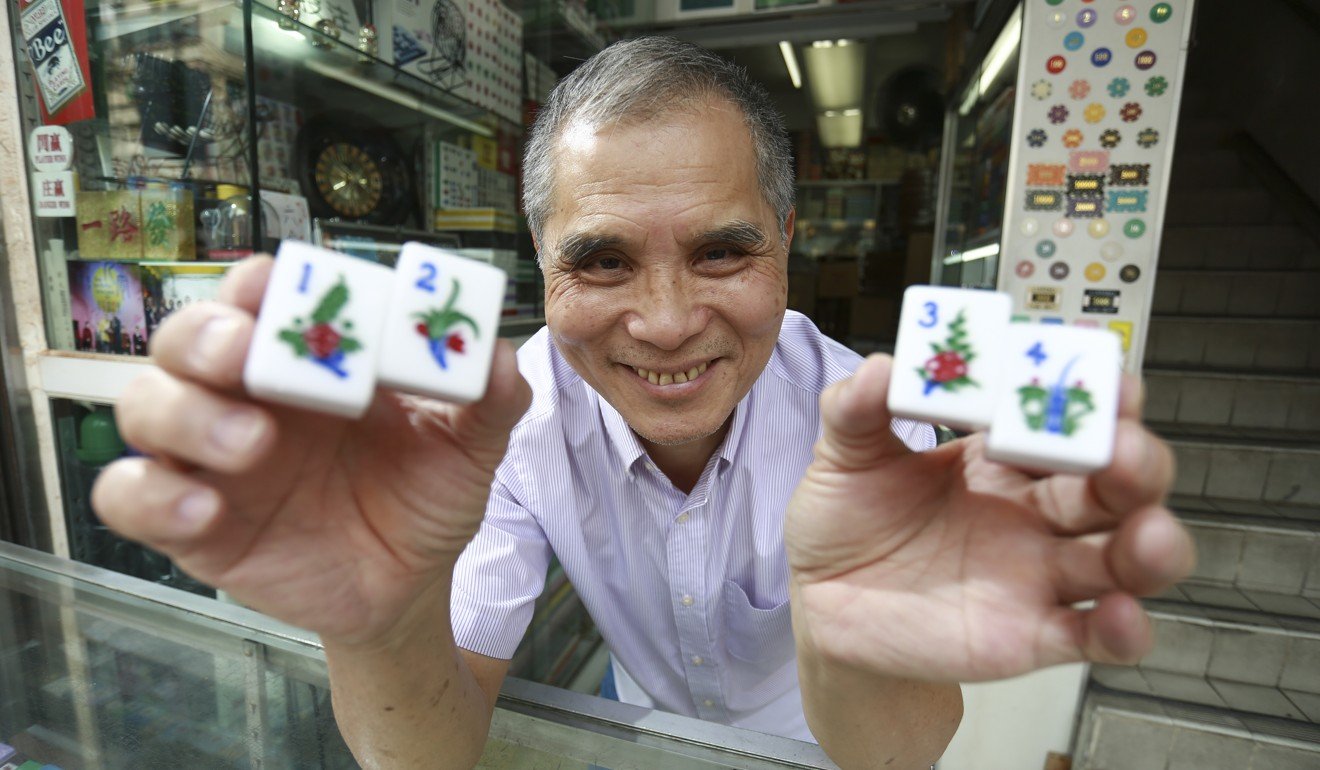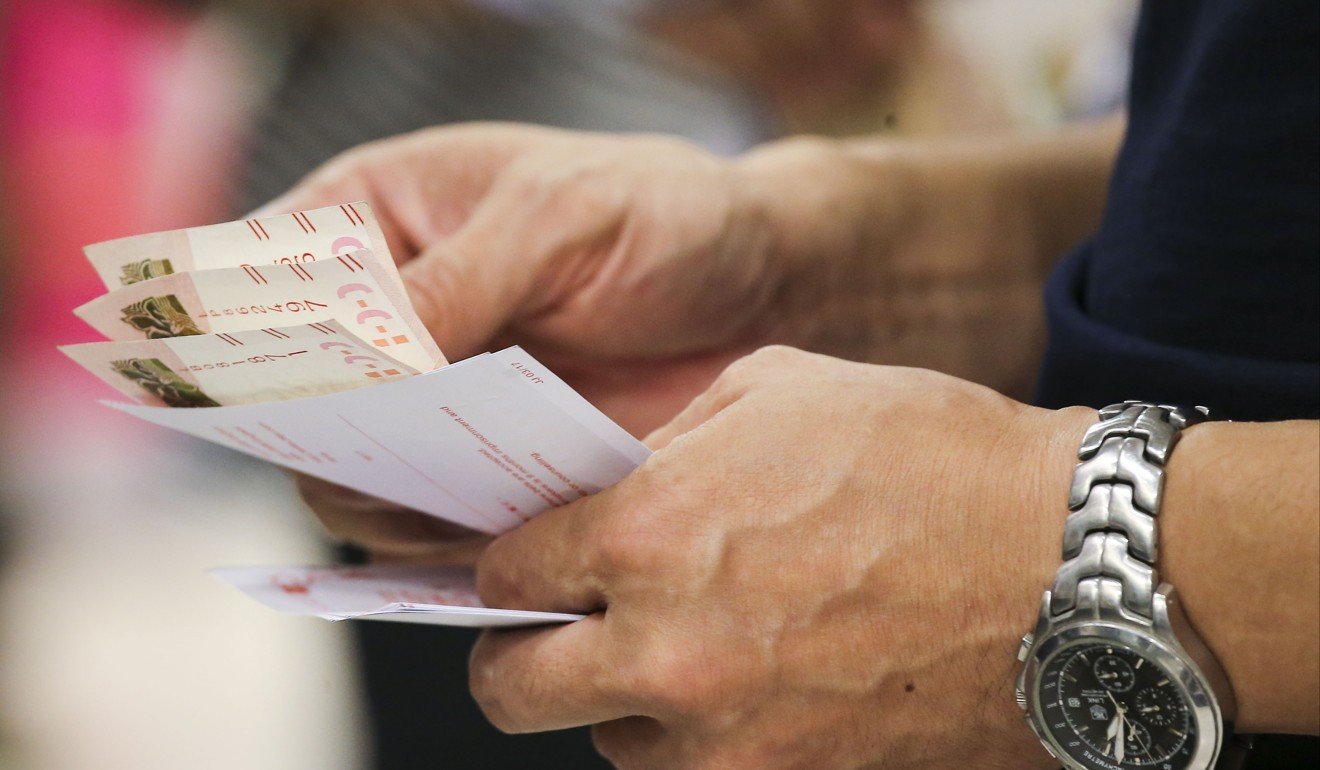
Familiar Hong Kong sound of mahjong tiles may be fading as more young people shun game
Only one in 50 young people in Hong Kong played the traditional Chinese table game at least once a week last year
The clack of shuffling mahjong tiles is a familiar sound in Hong Kong neighbourhoods, but a new study suggests it may be a fading phenomenon.
Only one in 50 young people in Hong Kong played the traditional Chinese table game at least once a week last year, down from one in 12 only five years ago, according to a survey which highlighted the declining popularity of the pastime.
Among the local population at large, only 18 per cent of Hongkongers between 18 and 64 years old sat down monthly for a game in 2017, compared with 28 per cent in 2012.
A veteran mahjong craftsman blamed the dwindling interest on the variety of entertainment options available these days, but a student who founded a “mahjong study society” at his university disagreed.
For decades, gathering a group of four players around a square table for a game of mahjong has been a favourite activity for Hongkongers.
The game is seen as a symbol of family bonds in Chinese society, as it is commonly played during festivals such as Lunar New Year and at wedding banquets.

But the latest findings by market research firm Ipsos suggest its popularity may be on the wane.
Since 2006, the company has been collecting data from Hongkongers on their consumption and lifestyle habits, particularly their leisure activities.
The latest study analysed the responses of 5,074 people who answered a telephone survey between April 2016 and March last year.
Mahjong exhibition reveals gambling industry that once dominated Hong Kong
The results were then put side by side with those from 2012. The company claimed this was a reasonable time frame for comparison.
Only 6 per cent of the population played mahjong weekly last year, as opposed to 10 per cent previously.
Older people tended to play more often – 9 per cent of the 55-64 age group played weekly, while only 2 per cent of those between 18 and 24 did so.

Cheung Shun-king, a master craftsman famed for producing handmade mahjong sets, felt his art was a dying trade.
“I only made my first sale at 4pm this afternoon … no one comes to buy my stuff now,” said the sole proprietor of Biu Kee Mahjong, which has operated on the busy Jordan Road in Yau Ma Tei since the 1960s.
Unlike those found in chain stores, Cheung only sells high-quality mahjong sets costing thousands of dollars.
Hong Kong’s tiny understairs shops: artisan mahjong tile maker on the dying art of hand carving in the machine age
The 64-year-old would not say whether he was still able to make ends meet, but revealed that business was down 50 per cent compared with a decade ago.
“There are so many ways young people can spend their free time now. Smartphone games are so handy … why would people sit at a table for hours and play mahjong endlessly?”
But one university student was determined to keep the game alive. Lui Cheuk-yan, a 22-year-old information engineering student at the Chinese University of Hong Kong, founded the Mahjong Study Society last year.

The group has since expanded to 200 members, who meet weekly on campus for a game.
Lui took things a step further in August, joining hands with peers from nine other tertiary institutions to hold the city’s first interschool mahjong contest.
That event drew more than 300 participants, while a second contest in December saw 200 hopefuls scrambling to secure 64 slots.
Asked why fewer young people were taking up the hobby, he said some novices may be reluctant to play for fear of losing money.
He admitted the game was often associated with gambling and therefore sometimes carried a negative image.
Hong Kong vice-chancellor hits out at students playing mahjong on campus
This was highlighted by an incident in 2016 in which a group of Chinese University students got into a verbal exchange with campus security guards after they were found playing mahjong in an open area after midnight.
Then vice chancellor Joseph Sung Jao-yiu hit out at the students for failing to meet the standards of “learned members of society”.
But Lui insisted the events he organised had absolutely no betting element.
“We just do it for fun,” he said.

